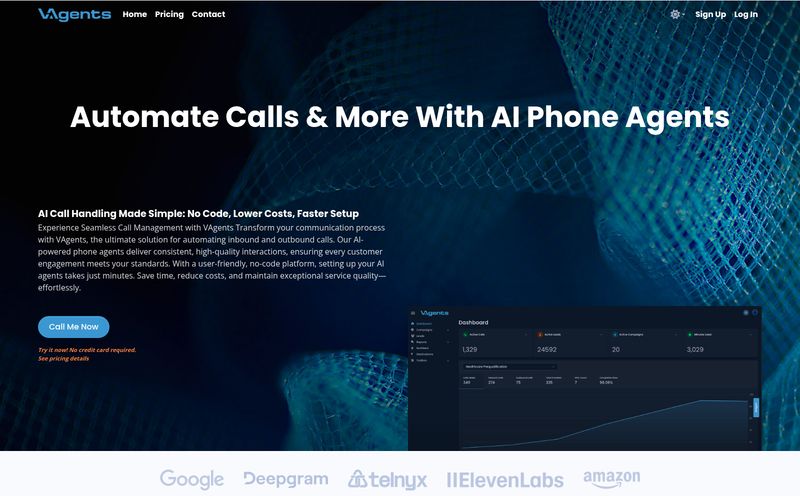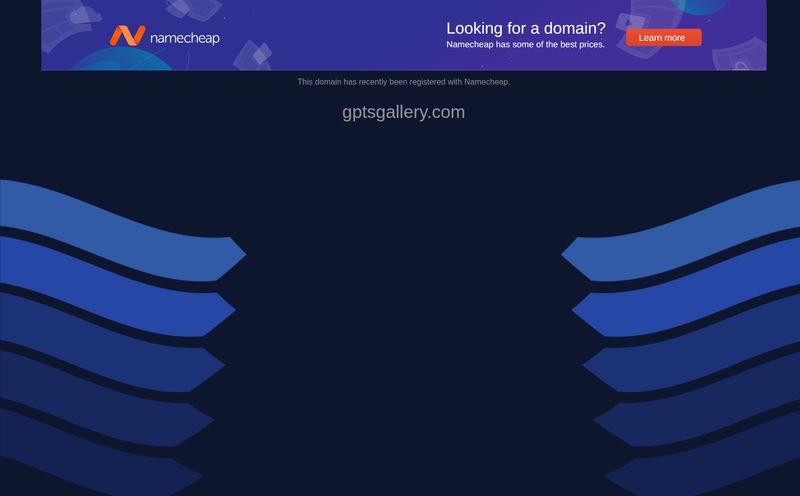Alright, let’s have a real chat. You and me. How many tabs do you have open right now? Go on, count them. Ten? Twenty? More? If you're anything like me, your browser is a chaotic city of sprawling applications, each one a different silo of precious information. It's a digital mess.
We live in this paradox of productivity. We have tools for everything—a tool for communication (Slack), a tool for documents (Google Drive), a tool for customer data (Salesforce), a tool for project management (Notion, Airtable). But instead of making us hyper-productive, they've created a new kind of work: the work of finding the work. It’s the silent killer of deep focus. That little dance between windows, the frantic CMD+Tab shuffling to find that one statistic someone mentioned in a Slack channel three weeks ago. It's exhausting.
So when a tool like Hyper comes along, promising to be the AI chat interface to rule them all, my seasoned, slightly cynical SEO heart skips a beat. Could this actually be it? The end of tab-switching madness? Let's take a look.
So, What Exactly is This Hyper Thing?
Imagine you hired a super-smart research assistant. This assistant has access to all your company's key platforms. They can read every Google Doc, every Slack message, every Salesforce entry, and every Notion page. Instantly. Now, instead of you manually digging through each platform, you can just ask your assistant a question in plain English. “Hey, what were the main takeaways from the Q4 marketing review deck?” and poof, it gives you the answer, citing the source.
That’s Hyper in a nutshell. It’s not just another search bar. It’s a conversational AI that consolidates your scattered data into a single chat interface. It’s less of a search engine and more of a digital librarian for a library where all the books are constantly rewriting themselves. A pretty cool concept, right?

Visit Hyper
Wrangling the Wild West of Workplace Apps
The modern work stack is a beautiful, chaotic mess. I've worked in agencies where the marketing team lives in Google Drive, sales won't leave Salesforce, and the dev team communicates exclusively through GitHub and Slack. Getting a straight answer that requires input from all three? A nightmare. It involves emails, meetings, and a whole lot of wasted time.
Hyper steps into this chaos by directly integrating with the big players:
- Google Drive
- Slack
- Salesforce
- Airtable
- Notion
- GitHub
- Gmail
By connecting these accounts, you’re essentially giving the AI a backstage pass to your entire operational workflow. This is where the magic is supposed to happen.
It’s Not Just Finding Files, It's Understanding Them
Here’s the part that really got my attention. Hyper claims to use an API-driven search without keywords or embeddings. For my fellow tech nerds, this is interesting. Most AI search tools work by creating 'embeddings'—a sort of numerical representation of your data. It's effective, but can sometimes feel like a sophisticated keyword search. Hyper’s approach suggests something a bit deeper, a more contextual understanding of the live data itself.
This means you can move from asking “find sales report Q1” to “summarize the key growth metrics from the Q1 sales report and compare them to the projections in the marketing team's Notion board.” It’s a subtle but massive shift in capability. You're not just retrieving data; you're interacting with it, synthesizing it, right from the chat box.
But Let's Be Real, Is It Perfect? The Not-So-Shiny Bits
I've been in this game long enough to know there's no such thing as a perfect tool. Every platform has its quirks and Hyper is no exception. Based on the specs and my experience with similar tools, there are a few things to keep in mind.
First, the initial setup. Connecting all those APIs and giving the right permissions isn’t a one-click affair. It requires a bit of admin work to get all your ducks in a row. It’s a one-time pain point, but a pain point nonetheless.
Second, and this is a big one, Hyper's effectiveness is directly tied to the quality of your existing data. It’s the classic “garbage in, garbage out” principle. If your Google Drive is a lawless wasteland of untitled documents and your Slack channels are pure chaos, Hyper can only do so much. It can find the needle in the haystack, but it can’t turn the hay into gold. In fact, it might just force you to finally clean up your digital house. A blessing in disguise, perhaps?
Finally, there might be a slight learning curve. For those of us who live and breathe AI chat, it'll feel natural. But for team members less accustomed to 'talking' to their software, it might take a minute to get used to framing requests conversationally instead of just typing in keywords.
The All-Important Question: What's the Price?
Ah, the pricing. I scrolled down the page, ready for the familiar three-tiered pricing table... and was met with the classic B2B SaaS calling card:
Contact for Pricing.
Honestly, this always gives me a slight chill. It often screams, "If you have to ask, you can't afford it." But in the world of serious enterprise software, it’s not that simple. This pricing model usually means the solution is tailored to the team. The cost will likely depend on the number of users, the specific integrations you need, and the volume of data being processed. It's not a $10/month tool for a solo freelancer; it's a strategic investment for teams and companies looking to solve a significant operational bottleneck. It's a tool for businesses who've calculated the high cost of wasted time.
My Final Take: Is Hyper Worth the Hype?
So, where do I land on Hyper? I’m cautiously optimistic. The problem it’s trying to solve—information sprawl and context-switching—is one of the biggest silent productivity drains in business today. The approach of using a conversational AI to chat with live data across platforms is, in my opinion, the right one.
It's not a magic wand. You still need to have your data in a reasonably organized state. But for data-heavy teams, sales organizations, and any company feeling the pain of app overload, Hyper seems like a powerful contender. It represents a move away from just storing information and toward actively engaging with it in a more intuitive, human way.
If your team is constantly saying "Where did I see that?" then it might be time to stop searching and start asking. Hyper could be the assistant you've been looking for.
Frequently Asked Questions about Hyper
What is Hyper in simple terms?
Think of Hyper as a smart assistant you can chat with. It connects to all your work apps like Google Drive, Slack, and Salesforce, and lets you find information, get summaries, and ask questions about your data without having to open each app individually.
Which applications can I connect to Hyper?
Hyper integrates with a growing list of popular workplace tools, including Google Drive, Slack, Salesforce, Airtable, Notion, GitHub, and Gmail.
Is my data secure when using Hyper?
Security is a primary concern for tools like this. Hyper emphasizes that it keeps data secure during its contextual chat processes, leveraging the existing security protocols of the platforms you integrate. As with any third-party tool, you should review their specific security and privacy policies.
How is this different from my computer's search bar?
A standard search bar finds files based on keywords in the title or content. Hyper is a conversational AI that understands context. You can ask it to compare data between two different documents, summarize a long thread, or pull specific figures from a report, which is far beyond the capabilities of a simple search.
Is Hyper difficult to set up?
There is an initial setup process to connect your various app accounts, which may require some technical input or administrative permissions. While not a one-click process, it's a necessary step to enable the tool's powerful cross-platform functionality.
How much does Hyper cost?
Hyper uses a "Contact for Pricing" model. This typically means pricing is customized based on your team's size, the number of integrations needed, and overall usage. You'll need to contact their sales team for a specific quote.



